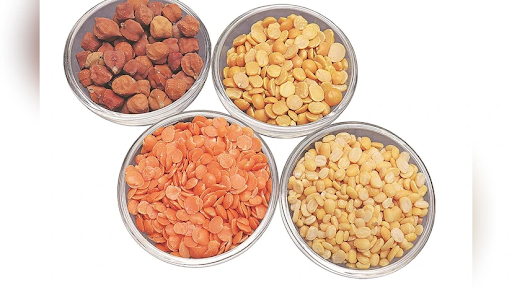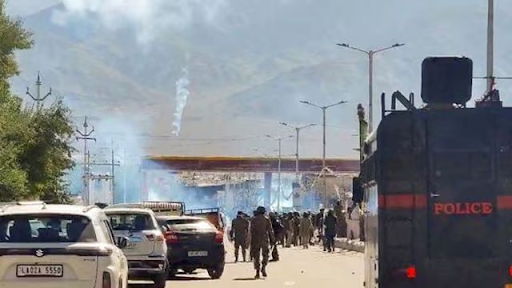Description
_Act,_1985.jpg)
Disclaimer: Copyright infringement not intended.
Context
- An investigation into the seizure of a large quantity of mephedrone, also known as 'Meow Meow', weighing 1,700 kg and valued at approximately Rs 3,500 crore, has uncovered connections to an international narcotics cartel.
Mephedrone
- Mephedrone, also known as 4-methylmethcathinone (4-MMC) or 'Meow Meow', is a synthetic stimulant drug.
- It belongs to the cathinone class of chemicals, which are similar in structure to amphetamines.
- Mephedrone produces effects similar to those of MDMA (Ecstasy) and amphetamines, including euphoria, increased alertness, feelings of empathy, and increased energy.
- The drug is typically taken orally, snorted, or injected, and can also be taken rectally.
- The legal status of mephedrone varies by country, but in many places, it is considered a controlled substance due to its stimulant and psychoactive effects.
- Health risks associated with mephedrone include increased heart rate, high blood pressure, anxiety, paranoia, and in severe cases, hallucinations and psychosis.

Narcotic Drugs and Psychotropic Substances (NDPS) Act, 1985
Establishment of the Narcotics Control Bureau (NCB):
- The NCB was set up under the NDPS Act with effect from March 1986.
- It serves as the primary enforcement agency for the Act, responsible for coordinating drug control efforts and investigating drug-related crimes.
Legislative Background and Purpose:
- India lacked legislation on narcotics until the NDPS Act was enacted.
- The Act was designed to fulfill India's treaty obligations under international conventions such as the Single Convention on Narcotic Drugs and the United Nations Convention Against Illicit Traffic in Narcotic Drugs and Psychotropic Substances.
Regulation of Cannabis and Its Derivatives:
- Cannabis and its derivatives (marijuana, hashish/charas, and bhang) were legally sold in India until 1985, and their recreational use was commonplace.
- The Act brought these substances too under strict regulation and imposed penalties for their misuse.
Definitions and Regulatory Framework:
- The Act provides definitions for various terms such as "narcotic drug," "psychotropic substance," "manufacture," etc., crucial for understanding its provisions.
- It establishes a regulatory framework for the production, sale, transport, and use of narcotic drugs and psychotropic substances, as well as the cultivation of cannabis plants, coca bushes, and opium poppies.
- Narcotic Drug: Includes coca leaf, cannabis (hemp), opium, and poppy straw, among others, and their derivatives.
- Essential Narcotic Drug: Narcotic drugs notified by the Central Government for medical and scientific use.
- Psychotropic Substance: Any substance, natural or synthetic, included in the list of psychotropic substances specified in the Schedule.
Jurisdiction of the Act:
- The Act extends to the whole of India.
- India includes its territorial waters, extending up to 12 nautical miles from the nearest point of the coastal state.
- The Act applies to all Indian citizens outside India and all persons on ships and aircraft registered in India, wherever they may be.
Central and State Governments' Roles:
- The Act empowers the Central Government to control and regulate operations related to narcotic drugs and psychotropic substances.
- It also provides for the establishment of State Governments to implement the Act's provisions at the state level.
Controlled Substances and Offences:
- The Act categorizes narcotic drugs and psychotropic substances into three schedules based on their potential for abuse and medical use.
- It prescribes various offences and penalties for violations, including illegal possession, sale, purchase, and consumption of controlled substances.
Interplay of Sections:
- Empowered officers from various agencies, including the Central Bureau of Narcotics, Directorate of Revenue Intelligence, and National Investigation Agency, are designated to enforce the Act.
- Statements under section 67 of the Act by different empowered officers from different agencies have evidentiary value, subject to certain conditions.
- The Act defines ‘coca derivative,’ ‘medicinal cannabis,’ ‘opium derivative,’ and ‘poppy straw concentrate,’ among other terms, to specify the substances included under narcotic drugs.
Punishments for Contravention:
- The Act prescribes varying punishments based on the quantity of the banned substance involved:
-
- Small quantity: Up to 1 year of rigorous imprisonment, a fine of up to ₹10,000 (US$130), or both.
- Quantity lesser than commercial quantity but greater than a small quantity: Up to 10 years of rigorous imprisonment and a fine of up to ₹1 lakh (US$1,300).
- Commercial quantity: Not less than 10 years but up to 20 years of rigorous imprisonment and a fine of not less than ₹1 lakh (US$1,300) but up to ₹2 lakh (US$2,500)
Central and State Governments:
- The Act empowers the Central Government to control and regulate operations related to narcotic drugs and psychotropic substances.
- It allows for the establishment of State Governments to implement the Act's provisions at the state level
Controlled Substances:
- Narcotic drugs and psychotropic substances are categorized into three schedules based on their potential for abuse and medical use.
- Schedule I contains the most potent and dangerous substances, while Schedule III contains substances with less abuse potential.
Offences and Penalties:
- The Act prescribes various offences and penalties for violations, including illegal possession, sale, purchase, and consumption of controlled substances.
- Penalties range from imprisonment for a minimum of one year to the death penalty, depending on the offence.
Special Courts:
- The Act provides for the establishment of special courts to try offences under the Act.
- These courts have exclusive jurisdiction over such offences and are empowered to impose stringent penalties

International Cooperation:
- The Act facilitates cooperation with other countries in drug control efforts.
- It includes provisions for extradition of drug offenders, mutual legal assistance, and sharing of intelligence and information.
Impact on Drug Use and Trade:
- The NDPS Act has had a significant impact on drug use and trade in India, leading to a decrease in recreational drug use and a crackdown on drug trafficking networks.
- It has also facilitated international cooperation in combating drug-related crimes, aligning India's efforts with global initiatives.
|
PRACTICE QUESTION
Q. Which international conventions influenced the enactment of the Narcotic Drugs and Psychotropic Substances (NDPS) Act, 1985, in India?
A) Geneva Convention on Narcotic Drugs
B) Vienna Convention on Narcotic Drugs
C) Single Convention on Narcotic Drugs
D) Paris Convention on Psychotropic Substances
Answer:
C) Single Convention on Narcotic Drugs
Explanation:
The NDPS Act, 1985, was enacted in India to fulfill the country's treaty obligations under international conventions such as the Single Convention on Narcotic Drugs and the United Nations Convention Against Illicit Traffic in Narcotic Drugs and Psychotropic Substances.
|




_Act,_1985.jpg)
_Act,_1985.jpg)





